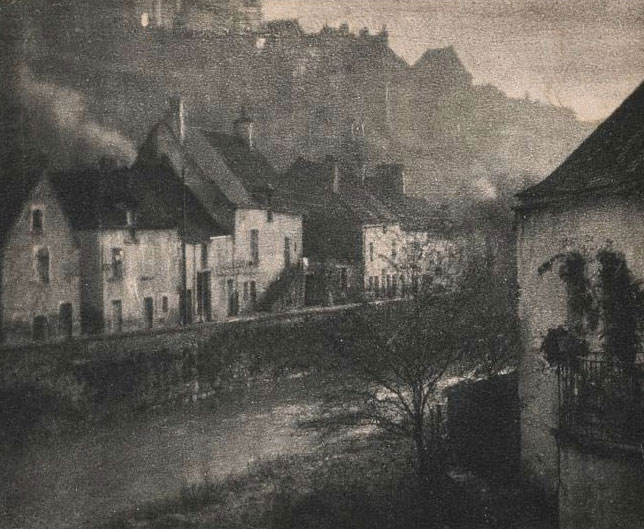- Relief printing
- Intaglio and planographic printing
- Color printing
- Bits and pieces
- Early photography in silver
- Non-silver processes
- Modern photography
- Color notes
- Color photography
- Photography in ink: relief and intaglio printing
- Photography in ink: planographic printing
- Digital processes
- Where do we go from here?
Gum Bichromate

Gum bichromate. C. H. Roblot. Untitled. c. 1910. 6 7/16 x 7 7/8" (16.4 x 20 cm). The Museum of Modern Art, New York. Gift of Richard Benson.
Most photographic processes were capable of rendering an accurate series of tones, running smoothly from dark to light. When the images were made with pigment, as in the carbon process, a technical problem arose because between the exposed, hardened surface of the gelatin and the paper was soft, unexposed gelatin. If such a print was processed in hot water the soft gelatin would melt and the hardened image would simply float off the paper. This difficulty was met by attaching the exposed surface to a different support from the one that had originally held it, transferring the image to a new sheet.
A lot of work went into finding a way to make pigment prints that did not require such a transfer, and one method that survived and enjoyed some popularity was the gum bichromate process. In this case the colloid used was gum Arabic instead of gelatin, and it was heavily pigmented and coated on a sheet by brushing it on while warm. A “toothy” sheet of rag paper was used, and the coating was designed so that, after exposure, it could be wetted and rubbed manually to loosen the soft gum while leaving the hardened gum and its pigment stuck to the paper fibers. Unlike all the other processes we have examined, gum bichromate did not produce a fine scale of tones. The retention of gum and pigment was haphazard, and since the toothy paper itself was the matrix that defined the tonal particles, the images were grainy. The rubbing that developed the image was done by hand and could strongly affect the way the picture looked. In some cases gum was printed on top of a platinum print, which allowed the smooth rendition of the latter process to support the heavy blacks that gum could produce while simultaneously covering up the graininess inherent in gum bichromate prints.

